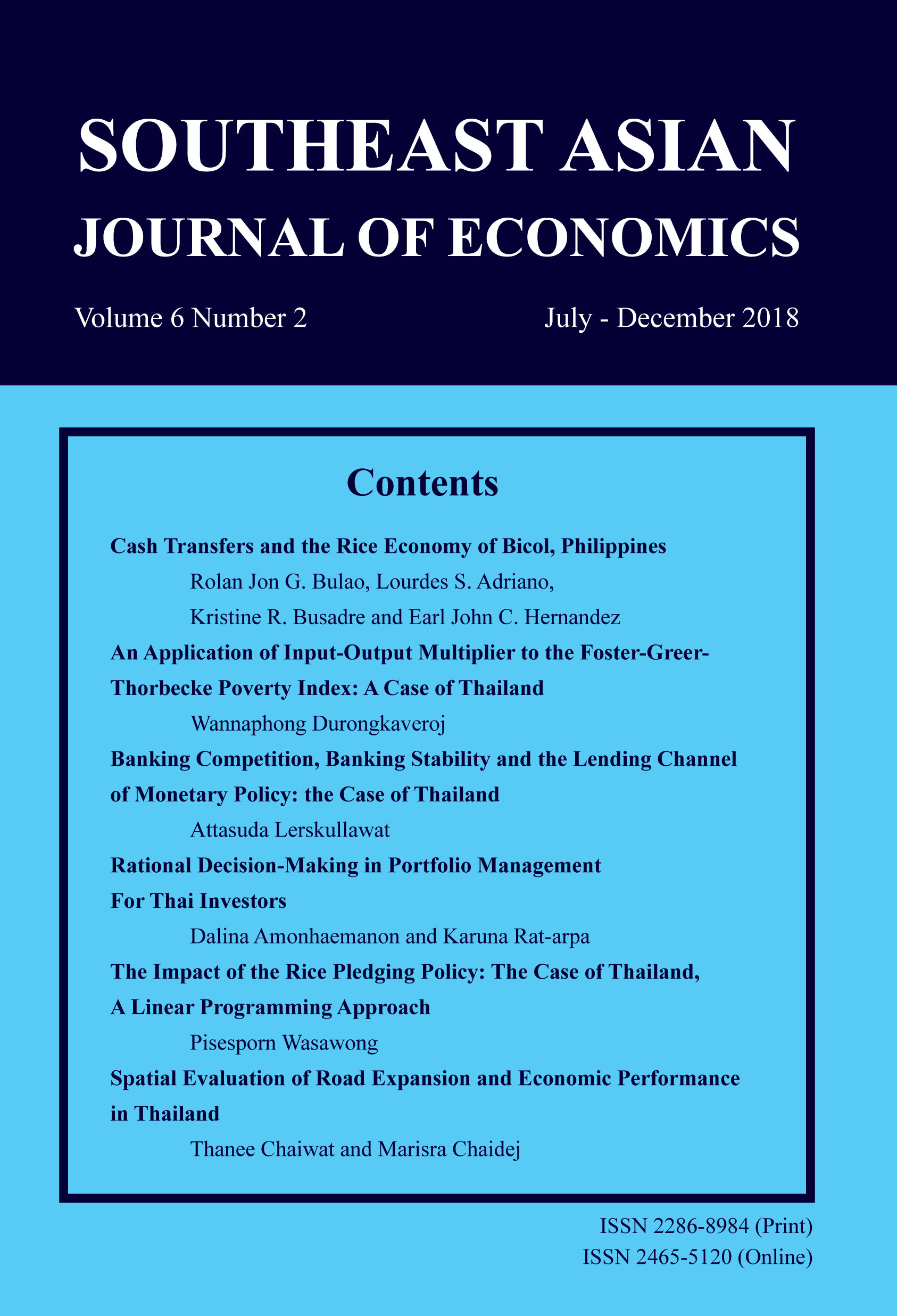An Application of Input-Output Multiplier to the Foster-Greer-Thorbecke Poverty Index: A Case of Thailand
Keywords:
Poverty, Foster-Greer-Thorbecke Class of Poverty, Input-output TableAbstract
This paper theoretically develops the Foster-Greer-Thorbecke poverty index using sectoral multipliers from an Input-Output Table and also applies the model to the Thai economy. This new method is based on the ideology of Hirschman’s unbalanced growth. To end the gap between the poverty line and individual income resulting in zero poverty, a different size of government subsidy is required based on the assumption that industrial policy can indirectly affect the poor through the employment channel. According to this study, it suggests that Thailand has successfully reduced poverty overtime because it, on average, requires a smaller amount of subsidy necessary to end this gap. However, a challenge in improving the well-being among workers in the agricultural sector still exists due to a relatively small increase in its backward linkage between 2005 and 2010 indicating that some massive injections through the pro-poor policy should be prioritized to this sector.
Downloads
Published
How to Cite
Issue
Section
License
The submission of a manuscript implies that the paper is an original work and has not been published elsewhere. The author(s) authorize the journal to reproduce or distribute the paper in printed or other electronic forms.






